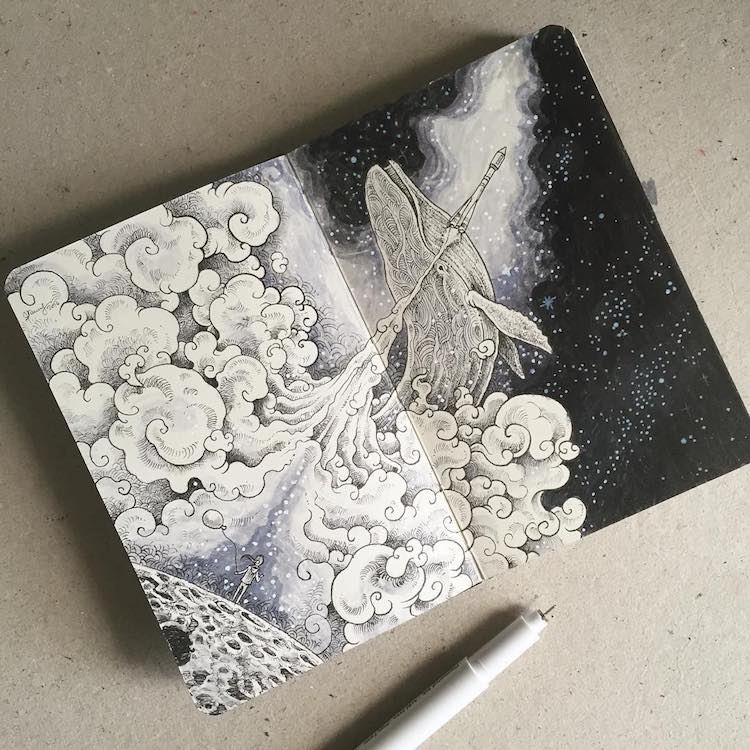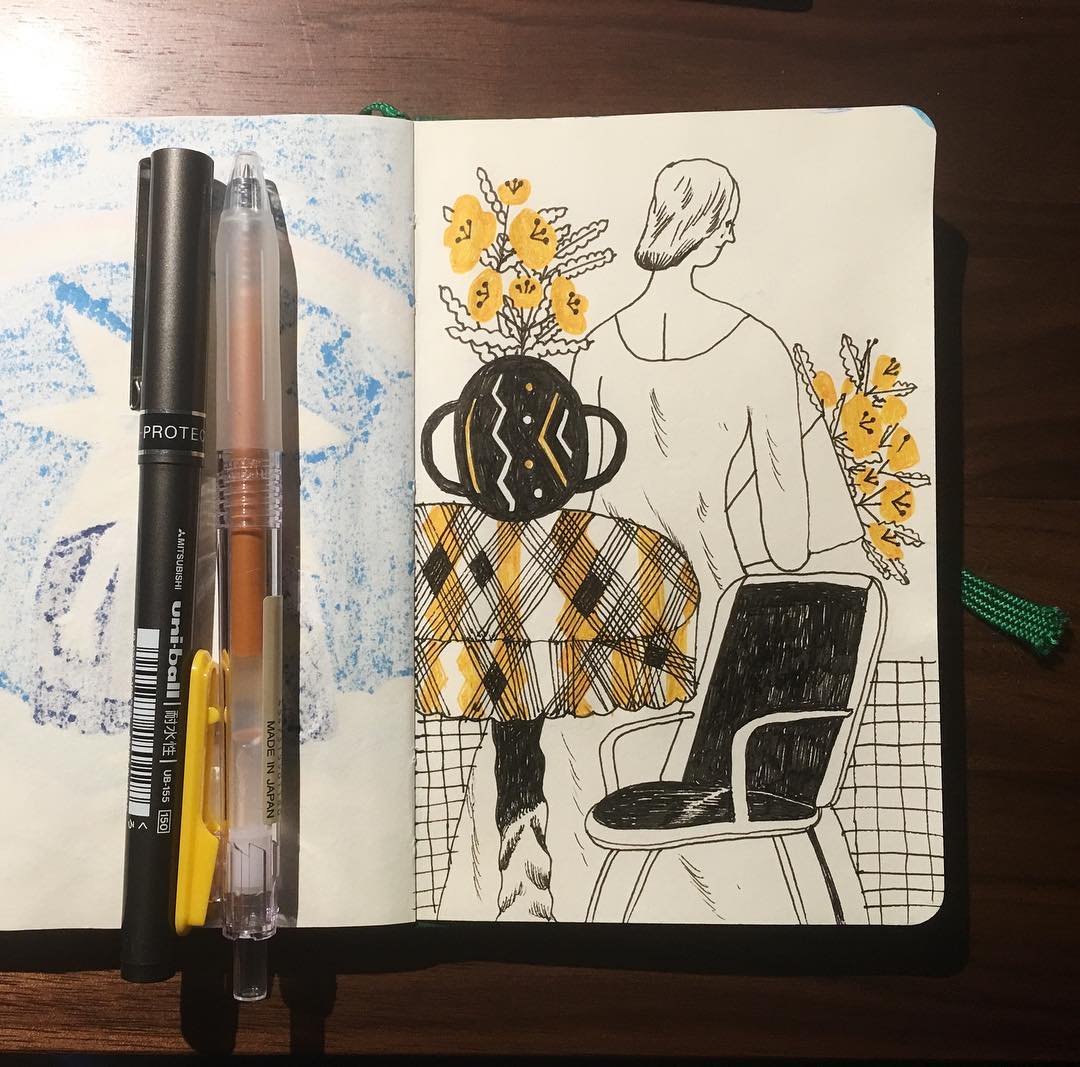With great pleasure, we will explore the intriguing topic related to Welcome to the Wonderful World of Big Sketchbooks!. Let’s weave interesting information and offer fresh perspectives to the readers.
Introduction
Welcome to the Wonderful World of Big Sketchbooks!

Hey there, young artist! Are you ready to embark on an exciting journey of creativity and discovery? Today, we’re going to explore the magic of big sketchbooks and how they can help you unleash your inner artist.
Why Big Sketchbooks?
You might be thinking, "Why do I need a big sketchbook? Can’t I just use a regular notebook?" Well, the answer is a resounding YES! Big sketchbooks offer a world of possibilities that smaller notebooks simply can’t match.

More Space to Explore: Big sketchbooks give you plenty of room to spread out your ideas, experiment with different techniques, and create large-scale drawings. Imagine drawing a giant dinosaur or a sprawling landscape – you can do it all with a big sketchbook!
-
Freedom to Be Bold: With all that space, you can be bolder and more expressive with your lines, shapes, and colors. Don’t be afraid to let your imagination run wild and fill those pages with your unique vision.
-
Perfect for Layering and Detail: Big sketchbooks are perfect for layering different colors and textures. You can build up your drawings gradually, adding details and depth as you go.

Let’s Get Started!

Now that you’re excited about your big sketchbook, let’s dive into some basic drawing techniques that will help you bring your ideas to life.
1. Lines and Shapes:
-
Lines: Lines are the building blocks of drawing. They can be straight, curved, thick, thin, or even dashed. Start by practicing different lines on your sketchbook. Try drawing lines that go up and down, side to side, and in circles.

-
Shapes: Shapes are formed by lines. We can find shapes everywhere – in the clouds, in buildings, in animals. Practice drawing simple shapes like circles, squares, triangles, and rectangles. You can even combine shapes to create more complex forms.

2. Basic Forms:
-
Spheres: A sphere is a round 3D shape. Think of a ball or a balloon. Practice drawing spheres by using light and shadow.
-
Cubes: A cube is a 3D shape with six square sides. Think of a box or a dice. Practice drawing cubes by focusing on perspective and depth.
-
Cylinders: A cylinder is a 3D shape with two circular ends and a curved side. Think of a can or a log. Practice drawing cylinders by paying attention to the curved surface and the highlights and shadows.
3. Perspective:
Perspective is how we show depth and distance in our drawings.
-
One-Point Perspective: Imagine looking down a straight road. The road seems to get narrower as it goes further away. This is one-point perspective. Practice drawing objects in one-point perspective by using a vanishing point.
-
Two-Point Perspective: Imagine looking at a building from the side. The lines of the building seem to converge at two points in the distance. This is two-point perspective. Practice drawing objects in two-point perspective by using two vanishing points.
4. Shading and Texture:
-
Shading: Shading is using different values of light and dark to create the illusion of depth and form. Practice shading by using your pencil to create smooth gradients.
-
Texture: Texture is the surface quality of an object. Think of the difference between a smooth stone and a rough piece of bark. Practice drawing different textures by using different pencil strokes and techniques.
5. Drawing from Observation:
-
Look Closely: The best way to learn to draw is to observe the world around you. Look closely at the objects you want to draw, paying attention to their shapes, textures, and details.
-
Break It Down: When you draw from observation, it’s helpful to break down the object into simpler shapes. This will make it easier to draw accurately.
-
Practice, Practice, Practice: The more you draw, the better you will get! Don’t be afraid to make mistakes. Every mistake is a learning opportunity.
FAQs:
1. What kind of pencil should I use?
The best pencil for you will depend on what you’re drawing and your personal preference. For beginners, a standard HB pencil is a good all-around choice. You can also experiment with different pencils to see what you like best.
2. How do I know if I’m drawing correctly?
There’s no one "right" way to draw. The most important thing is to have fun and express yourself. Don’t be afraid to experiment and try new things.
3. What if I don’t have any ideas?
That’s okay! There are plenty of resources online and in libraries that can help you find inspiration. You can also look around your home or neighborhood for things to draw.
4. How can I improve my drawing skills?
The best way to improve your drawing skills is to practice regularly. You can also take drawing classes, watch online tutorials, and study the work of other artists.
5. What are the benefits of drawing?
Drawing is a wonderful activity that can benefit you in many ways:
-
Boosts Creativity: Drawing allows you to express your ideas and imagination in a visual way.
-
Improves Observation Skills: Drawing from observation helps you to see the world in a new way.
-
Enhances Problem-Solving Skills: Drawing requires you to think critically and solve problems.
-
Reduces Stress and Anxiety: Drawing can be a relaxing and therapeutic activity.
-
Builds Confidence: As you improve your drawing skills, you will gain confidence in your abilities.
So, there you have it! Now you’re ready to start filling your big sketchbook with amazing drawings. Remember, the most important thing is to have fun and let your creativity flow. Happy drawing!

Thus, we hope this article has provided valuable insights into Downloads Welcome to the Wonderful World of Big Sketchbooks!. We hope you find this article informative and beneficial. See you in our next article!
 cryptonias.my.id News Bisnis Technology Tutorial
cryptonias.my.id News Bisnis Technology Tutorial